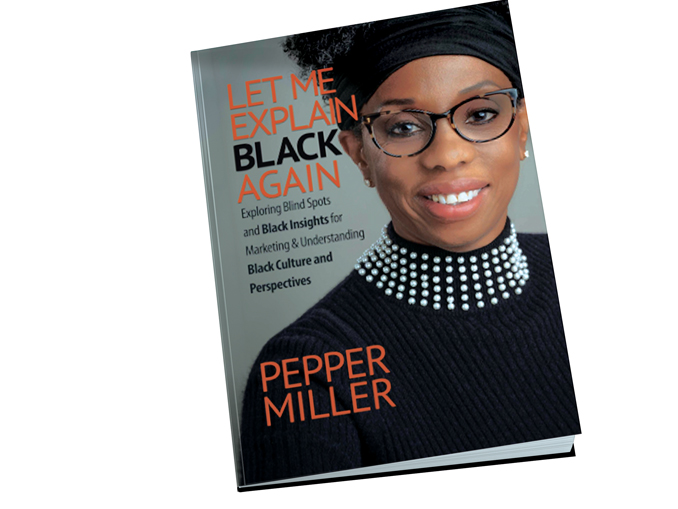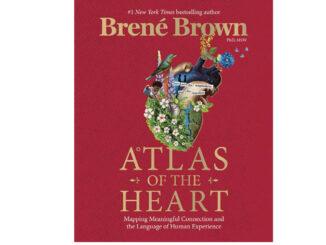 Reviewed by Isabel Aneyba, Founder & Managing Director, COMARKA, Austin, Texas, ianeyba@comarka.com
Reviewed by Isabel Aneyba, Founder & Managing Director, COMARKA, Austin, Texas, ianeyba@comarka.com
As a founder of a cross-cultural research company who has conducted research for 17 years now, I love to unveil truths about U.S. Hispanic and Mexican consumers. The book by Pepper Miller, Let Me Explain Black Again: Exploring Blind Spots and Black Insights for Marketing & Understanding Black Culture and Perspectives, reminded me why I am a cross-cultural researcher. The reason is respect: I want to unveil the truths of Latino consumers to bring market growth to companies. I also wish to break down stereotypes and help others know U.S. Hispanics for the people they really are, including as quality, loyal customers.
Similarly, the author of this new book, Pepper Miller, president of Hunter-Miller Inc., wants respect for Black people. She wants us to see Black people and Black consumers as not only valuable customers but also in a deeper and more insightful way. I had chills when I read the preface of her book.
As a researcher since 1995, Miller found her calling in the African American consumer market. She conducted qualitative research with African American consumers to better understand their motivations and behaviors and help companies craft brand messages that echo their beliefs and aspirations.
By writing this book now, Miller clearly states that she wants more. She wants to help readers understand the importance and significance of Black culture, change perspectives, and bring awareness.
Her book outlines a systematic way to remove bias. She identifies seven Blind Spots: 1) The Avoidance of America’s Unbridled History, 2) Privilege and Deficit of Empathy, 3) Misunderstanding the Language of Black Culture, 4) Misunderstanding and Misjudging Black Identity, 5) Unapologetically Black, 6) No Virginia, We Are not Post Racial, and 7) Generations of Awakenings Give Rise to the Fight for Equality. By removing these blind spots, she says leaders will understand and connect with Black Americans, create better campaigns, and improve brand engagement with them. They’ll also become more self-aware of their bias in the process—a wonderful benefit!
As I quickly read the first 88 pages of the book about the seven blind spots, I noticed how my level of self-awareness grew. I have taken time to observe Black people and reflect on how they are treated. I have seen subtle or unintentional “microaggressions.” This has guided me to communicate with more respect and deep appreciation of Black individuals—whether it is a friend, a participant, a researcher, or someone I am just crossing paths with.
I was particularly fascinated by Blind Spot 3—Misunderstanding the Language of Black Culture. I learned that many Black people have different beliefs, communication styles, and vocabulary due to their history of segregation. During segregation, Black people developed a strong sense of community and a way of communicating that reinforced that sense of community and belonging. Pepper says, “Authentic Black people are real, unapologetic, and informative and often raw.” Some English words have different meanings for them. For example, when Black men talk about a “dog,” they may refer to a close male friend.
Code-switching happens when Black people speak a different English to be accepted by non-Black people. It was eye-opening to realize that Black people use code-switching to make non-Black people feel comfortable and to feel less judged. Similarly, U.S. Hispanics code-switch when they are in the presence of non-Hispanics. I have seen code-switching during moderating Hispanic focus groups when a non-Hispanic researcher joins, and the participants switch their friendly style to more direct English to mimic the non-Hispanic researcher. Frequent code-switching has a negative effect on Black people’s well-being because it tells them, “There’s no place here for me to be me.” That’s why it is critical for us to accept and respect Black people (and Hispanics, too) to show them “there is a place for you.”
Other chapters include valuable insights about Black youth, women, men, immigrants, LGBTQ individuals, and a winning brand strategy for reaching the Black community.
By reading this book, I answered Miller’s invitation to become color brave: “To see Black people and their culture with appreciation.” My hope is that you would like to become color brave, too.




